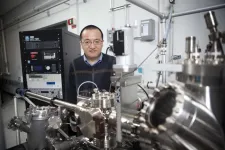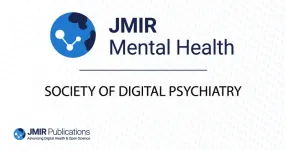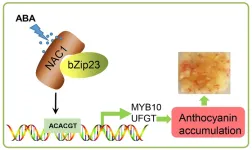(Press-News.org)
Deadlines are part and parcel of modern knowledge work. Journalists must serve their weekly columns, managers must turn in their monthly reports, and researchers must submit their papers and proposals on time. Despite their ubiquity, deadlines conjure up negative feelings and are perceived as challenging events. Accordingly, there has been a trend to do away with deadlines, where possible. For instance, the National Science Foundation (NSF) in the United States introduced no-deadline submissions in some of its funding programs. Critics, however, have been arguing that although deadlines may be painful, they are necessary, because they motivate people to act.
Researchers from the University of Houston, Texas A&M, and the Polytechnic of Milano set out to address the question at the heart of the matter: “Does knowledge work near deadlines incur higher sympathetic load than knowledge work away from deadlines?” Sympathetic activation is the state of physiological arousal that indicates how much people are “on the tips of their toes,” and often leads to stress. This is why its intensity and duration should be kept in check, according to the researchers.
The first-of-its-kind study published in the Proceedings of the ACM Human Factors in Computing, was led by Ioannis Pavlidis, professor of computer science and director of the Affective and Data Computing Laboratory at UH.
Per an institutionally approved ethical protocol, 10 consenting researchers were monitored as they worked at the office in the two days leading to a critical deadline, and two other days without an impeding deadline. Miniature cameras were placed at the researchers’ university office to unobtrusively record their facial physiology and expressions, as well as their movements throughout the working day. The participants’ sympathetic activation was measured every second through quantification of their imaged perinasal perspiration levels.
Applying advanced data modeling on hundreds of hours of data recordings, the team found that researchers experience high sympathetic activation while working, which speaks to the challenging nature of the research profession. Surprisingly, this high sympathetic activation remains about the same with or without deadlines.
“Research is tough every day,” said Pavlidis. “Using a metaphor, if you are under heavy rain all the time, if one day the rain is a little heavier, it would not make much difference to you because you are already wet to the bone. This is what our models show with respect to the effect of deadlines on researchers.”
The only factors found to exacerbate sympathetic activation were extensive smartphone use and prolific reading/writing. The first factor is a manifestation of the gadget-based addiction trends that have altered human behaviors across the board. The second factor is integral to research work, and thus unavoidable. Thankfully, however, researchers appear to auto-regulate increases in their sympathetic activation by instinctively adjusting the frequency of physical breaks. It was observed that on average, researchers take one physical break every two hours. From this baseline, data analysis showed that for every 50% increase in sympathetic activation, the break frequency nearly doubles, revealing the limits of cognitive work under increasing stress.
“Our naturalistic study not only brings fresh insights into researchers’ behaviors but also challenges some prevailing views about deadlines”, Pavlidis said. “With the recent advances in affective computing, I expect such naturalistic studies to proliferate across domains, challenging misconceptions we hold about a lot of things,” added Pavlidis.
The study was funded by a grant from the National Science Foundation.
END
URBANA, Ill. – As Corn Belt states seek ways to curb nitrogen flow from farms into the Gulf of Mexico, new University of Illinois research adds evidence for winter cover crops as an important part of the solution. A simulation study published in Science of the Total Environment finds widespread planting of cereal rye in Illinois could reduce nitrate in the state’s tile drainage water by 30%.
The research team, part of the College of Agricultural, Consumer and Environmental Sciences (ACES) and The Grainger ...
Regenerative medicine—the process of replacing, engineering or regenerating human cells, tissues or organs—holds exciting potential for the field of health care. It could someday make it possible to grow a new kidney in a petri dish, repair damaged nerve cells, or reverse memory loss.
Continuing a commitment to advance medicine through forward-thinking approaches and groundbreaking discoveries, the Icahn School of Medicine at Mount Sinai is announcing the creation of the Institute for Regenerative Medicine to foster innovative research into new pathways to cure ...
BINGHAMTON, N.Y. -- Researchers at Binghamton University partnered with the Center for Functional Nanomaterials (CFN) — a U.S. Department of Energy Office of Science User Facility at Brookhaven National Laboratory — to get a better look at how peroxides on the surface of copper oxide promote the oxidation of hydrogen but inhibit the oxidation of carbon monoxide, allowing them to steer oxidation reactions.
They were able to observe these quick changes with two complimentary spectroscopy methods that have not been used in this way. The results of this work have been published in the journal Proceedings ...
A new Technology from Sage report sheds light on challenges in the librarian-patron relationship, including the need for greater digital literacy and more tailored support for students, and recommends methods to support the student experience. “The Knowledge Gap Between Librarians and Students: Contrasting Librarian and Student Perspectives on the Undergraduate Workflow” report is the second in the Librarian Futures series.
A survey of nearly 600 students in the US, UK, and Canada highlights key findings for librarians across the undergraduate workflow — specifically ...
Over the past few decades, it has become obvious that climate change, and consequent extreme weather events, can wreak havoc on crop yields. Concerningly, there is a large disparity in agricultural vulnerability between developed and developing countries. In a new study, researchers have looked at major food grains in India to understand the long- and short-term effects of climate change on crop yields.
“Most studies that measure the effects of climate change are looking at year-to-year changes, which are representative of variations in weather and not climate,” said Madhu Khanna (CABBI), a professor of agriculture ...
Plant diseases pose a significant threat to nations across the globe, owing to the financial burden they impose and the impact they have on food security. Healthy crops sustain millions of livelihoods, and accurate diagnosis of plant diseases allows for timely interventions to ensure sufficient crop production with minimal yield loss. Traditional approaches to disease recognition typically follow two paths. The first relies on crop inspection by trained experts, while the second leverages neural networks ...
Researchers have developed a new method to distinguish between cancerous and healthy stem cells and progenitor cells from samples of patients with acute myeloid leukaemia (AML), a disease driven by malignant blood stem cells that have historically been difficult to identify. The findings, published today in the journal Cell Stem Cell, pave the way for the development of new techniques to predict whether patients will respond to chemotherapy.
AML is a type of cancer characterised by the rapid growth and accumulation of abnormal white blood cells. ...
Kamaljeet Sanghera, Executive Director, Institute for Digital InnovAtion (IDIA), Research and Innovation Initiatives; Professor, Information Sciences and Technology, received funding to design and deliver a pilot of a summer, hands-on experience for 20 high school students.
Sanghera will leverage IBM artificial intelligence (AI) kits to help the students gain technical skills, knowledge, and abilities in AI and an understanding of its ethical and social impact.
Sanghera received $150,000 from Trenchant Analytics, LLC, on a subaward from the ...
(Toronto, April 24, 2023) JMIR Publications and the Society of Digital Psychiatry (SODP) have announced a new partnership aimed at advancing research in the field of digital mental health. This collaboration will focus on supporting education and knowledge sharing in the fast moving world of digital psychiatry and establishing priorities for the space, including identifying current gaps in knowledge and determining areas for future study, with particular emphasis on addressing disparities in access to care.
The partnership brings together JMIR Publications, a leading open-access publisher of scholarly journals on digital health, ...
Exploring the upstream transcription factors or proteins interacting with MdMYB10 is an important way to enrich the complex network of anthocyanin synthesis. In this study, the upstream regulatory gene MdNAC1 of MdMYB10 was selected through yeast one hybridization experiments, and EMSA and LUC experiments showed that MdNAC1 can transcriptionally activate MdMYB10. The transformation experiments in apple callus and apple fruit showed that MdNAC1 significantly promoted the accumulation of anthocyanins. At the same time, researchers have found that MdNAC1 can interact with MdbZIP23 ...







